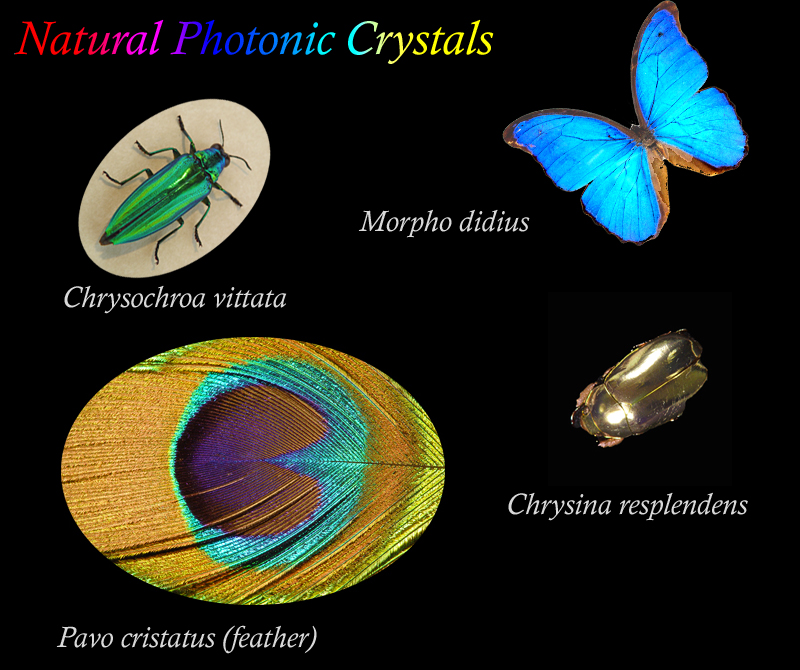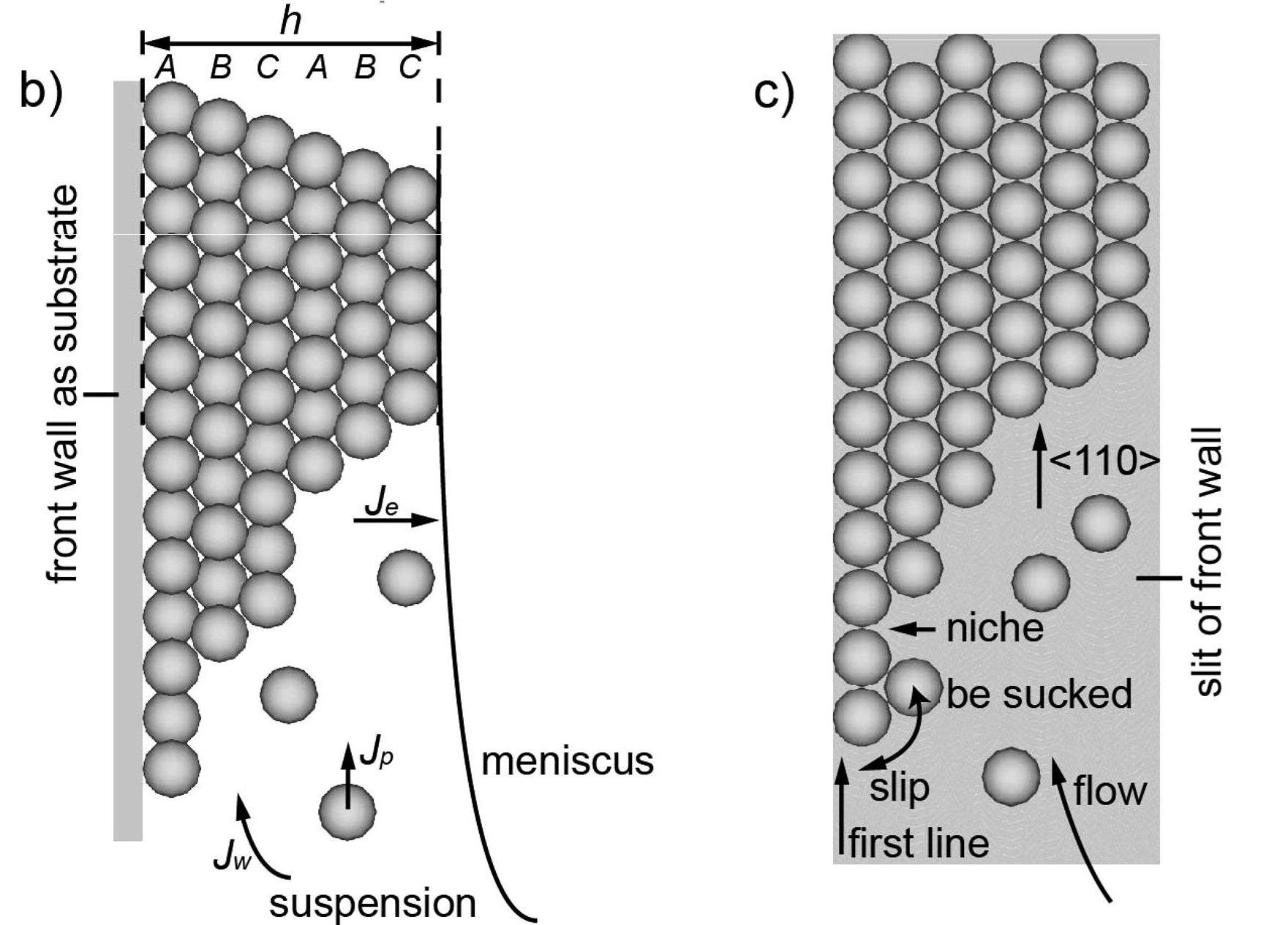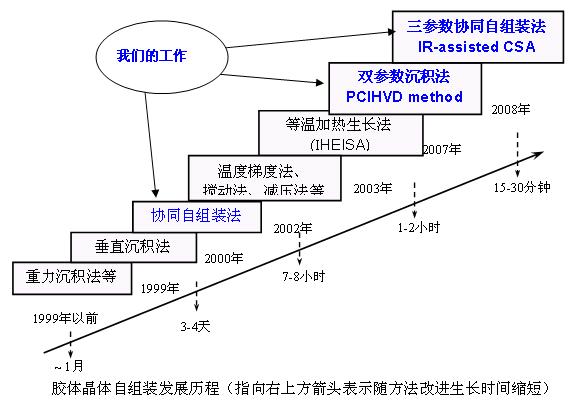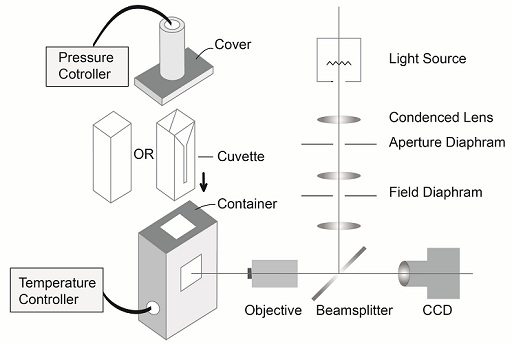Colloidal Photonic Crystal
Photonic crystals are periodic(about 100nm) optical nanostructuresthat are designed to affect the motion of photons in a similar way that periodicity of a semiconductor crystal affects the motion of electrons.Photons with energy in the band gap are forbidden in crystals.Photonic crystals occur in nature in various forms,such as opal,wings of butterfly,with iridescent colors.


As the photonic band gap is determined by the periodic structrue of crystal,so if there are defects in the crystal,photons in the band gap are able to propagate in the defects.Thus,By carefully designing the defects:point defects,line defects,face defects,We can get a good control over the photons’ propagation,This is of great importance to future Application.
In addition,microscopic-mesoscopic ordered structures has many interesting features,including wettability.for example,mosquito’s eye is superhydrophobic,and this is important for it to survive in the rain.By altering the orderd structure and materials,we can fabricate artificial super-hydrophobic OR super-hydrophilic structure,like lotus.In a word,Photonic crystal is largely mimicking the nature.
There are mainly two series of ways to fabricate ordered structure:Top-Down OR Down-Top.Among them,Collodal Self assembly,with it’s simplicity and low cost,has attracted much attention.Self-assembly (SA) in the classic sense can be defined as the spontaneous and reversible organization of molecular units into ordered structures by non-covalent interactions.Self-assembly is also a phenomenon that widely occures in nature. The figure below shows the typical Evaporation Induced Self-assembly(EISA):With the evaporation of water,the colloid self assembled into orderd structure.
Our work aims at exploring how to grow colloidal photonic crystals with more perfect order and lager areas. The following graphic shows the prominent work done by our group in the colloidal crystals growth fields. We started from the cooperative self-assembly of colloidal particles of different sizes. The circumstances of the self-assembly system were precisely controlled and the growth condition of temperature and pressure was optimized. All these attempts not only greatly improved the quality of the colloidal crystals, but also further shortened the growth time.
Meanwhile, in order to further investigate the mechanism of self-assembly of colloidal spheres, we designed and built a setup to in situ observe the evaporation-induced colloidal self-assembly process under precisely controlled pressure and temperature. Through microscopic observations, the motion of particles with micron and submicron scales in the growth front can be recorded directly. By changing the circumstances (temperature and pressure) of the self-assembly system and properties of fluid, different evaporation rate of solvent and growth rate of colloidal crystals were measured. It turned out that both evaporation rate and growth rate as functions of temperature and pressure fit Stefan’s law well. The results obtained provide an insight into the growth mechanisms of self-assembly and theoretical basis for optimizing the experimental growth conditions of colloidal crystals.



On the other hand, since the aforementioned setup, which is limited to observing the movement of spheres in the focal plane, cannot get the whole information of the growth of three-dimensional colloidal crystals, an optical microspectroscopy setup was built to real-time monitor the whole growth process of evaporation-induced colloidal self-assembly. The disadvantage of traditional methods of averaging information over large sample volumes was overcome. The detected DC signals was converted to AC signals by a chopper, which avoided the background noise and greatly enhanced signal to noise ration. Detailed information referred in our recent papers and patents is provided here.
Ref.
http://en.wikipedia.org/wiki/Photonic_crystal
http://en.wikipedia.org/wiki/Self-assembly
News & Events
- A new world record 13.6% efficiency of CZTSSe solar cells by Institute of Physics, Chinese Academy of Sciences
- Congratulations for the graduation of Dr. Zhang and four undergraduate students
- Spring Hiking
- Na Zhou successfully defended her doctoral dissertation
- Our group joined the activity held by IOP labour union
